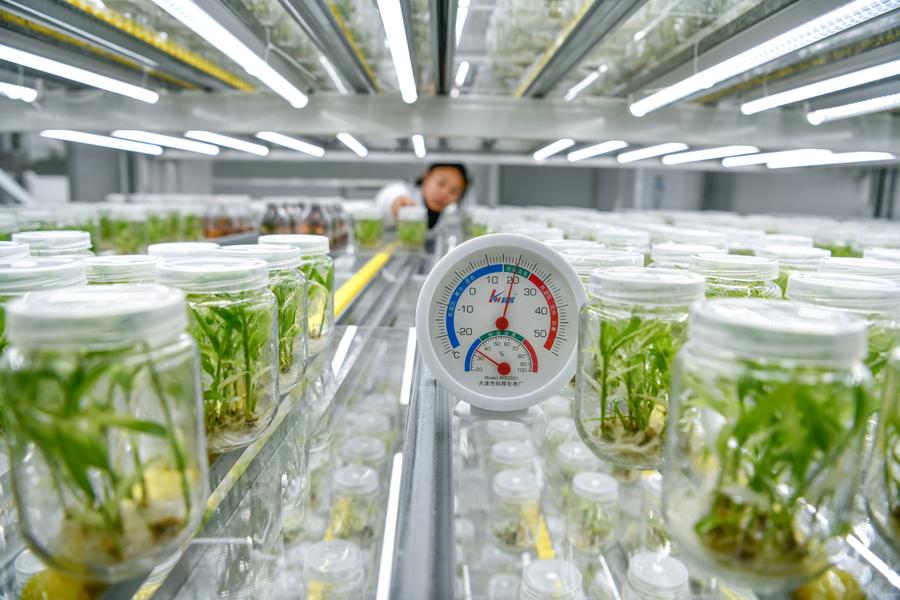
China’s AI-Driven Agricultural Revolution: Transforming Rural Farming
China is embracing an AI-powered transformation, revolutionizing industries and daily life by enhancing automation, boosting efficiency, and unlocking new possibilities. In a six-part series titled “New Frontiers of AI Applications,” Xinhua explores how artificial intelligence is reshaping various sectors. This final piece highlights AI’s impact on agriculture, benefiting over 460 million people in China’s rural communities.
Smart Farming in Action
BEIJING, March 23 (Xinhua) – In a high-tech greenhouse in Chengdu, Sichuan Province, two AI-powered robots swiftly navigate between crop rows during patrol training. Equipped with high-definition cameras, they capture real-time images of crop growth and instantly upload them to the cloud for analysis.
“After integrating the DeepSeek large model, we trained the robots with tens of thousands of images, improving their pest identification accuracy to over 80 percent,” said Wu Yuanqing, the robots’ developer.
As accuracy improves, these robots will help farmers make better planting decisions, increase efficiency, and optimize agricultural production, Wu added.
The rise of AI-driven agriculture is a key part of China’s broader effort to modernize its farming sector and drive rural revitalization, directly impacting millions of people.
Government Support for Smart Agriculture
The Chinese government has introduced various policies to promote smart agriculture. The 2025 policy framework prioritizes the development of “new quality productive forces in agriculture,” emphasizing AI, big data, and low-altitude technologies to enhance productivity.
A prime example of this transformation is Maoming, Guangdong Province, a renowned lychee-growing region where traditional farming is integrating with cutting-edge AI.
In February, the city deployed the DeepSeek model into its AI assistant platform, incorporating over five million data points, including a lychee disease prevention database and detailed local weather records.
According to Xu Hong, an official from Maoming’s agricultural bureau, 69 sets of 5G-powered IoT sensors have been installed across 20 lychee-growing towns. These sensors monitor soil moisture, air temperature, and other factors, providing farmers with real-time insights to preemptively manage risks posed by adverse weather conditions.
Local farmers are also embracing AI. Zhang Xianfeng, a lychee grower, recently turned to an AI-powered assistant when persistent wet and cold weather threatened her crops. Within seconds, the system generated a tailored management plan.
“In the past, we relied on experience to determine flowering periods, apply fertilizers, and combat diseases—often reacting too late,” Zhang said. “Now, AI solutions help us respond immediately and accurately.”
AI Market Growth and Future Potential
Driven by rising demand, AI in agriculture is expanding rapidly. In 2021, China’s AI-powered agriculture market was valued at approximately 68.5 billion yuan (9.55 billion USD). By 2024, this figure is projected to exceed 90 billion yuan, with an average annual growth rate of 10 percent, according to the Qianzhan Industry Research Institute.
Despite being in its early stages, experts see immense potential for AI in agriculture. Li Zhan, a professor at Southwest Jiaotong University, emphasized AI’s role in precision farming, pest control, automation, and supply chain optimization.
“Domestic AI technologies like DeepSeek will enhance agricultural productivity, improve resource management, and ensure product quality and safety,” Li said, adding that AI will drive sustainable and intelligent agricultural development.
Challenges and Future Needs
However, several challenges remain. Data inconsistencies, privacy concerns, and slow farmer adoption hinder AI’s full potential in agriculture. Liu Jingjing, a researcher at China’s Ministry of Agriculture and Rural Affairs, emphasized the need to strengthen rural infrastructure and improve AI accessibility to overcome these barriers.
As AI continues reshaping China’s agricultural landscape, ongoing advancements in technology, policy support, and infrastructure development will be key to ensuring a smarter, more efficient, and sustainable future for farming.
